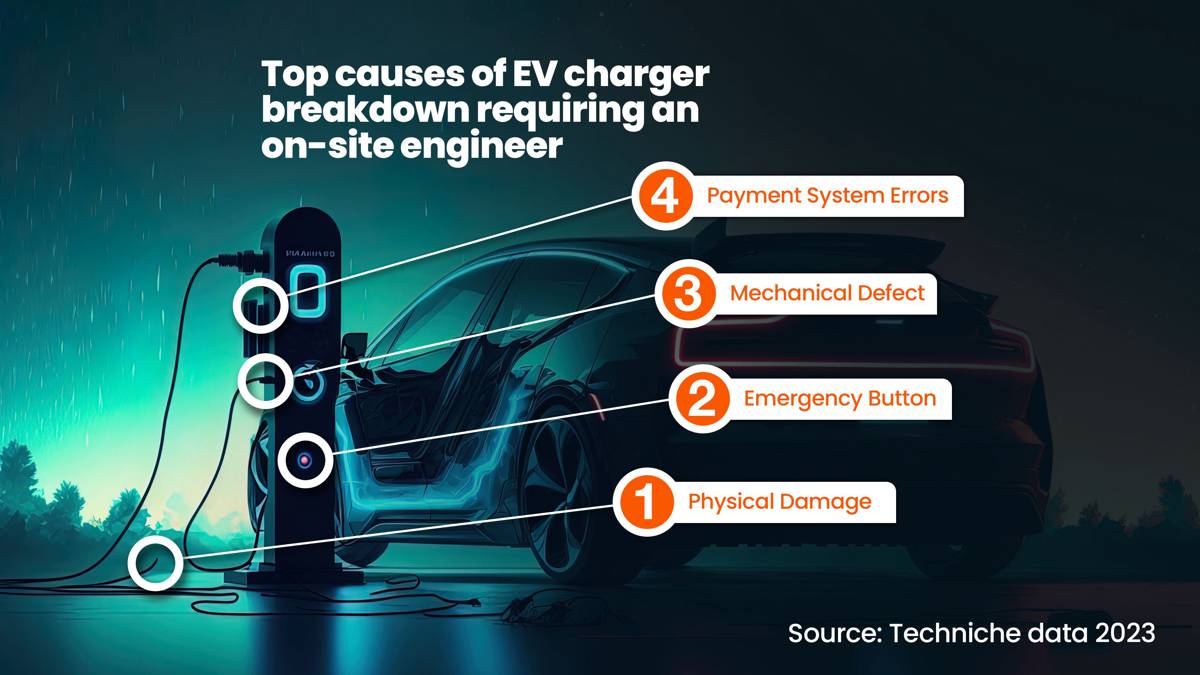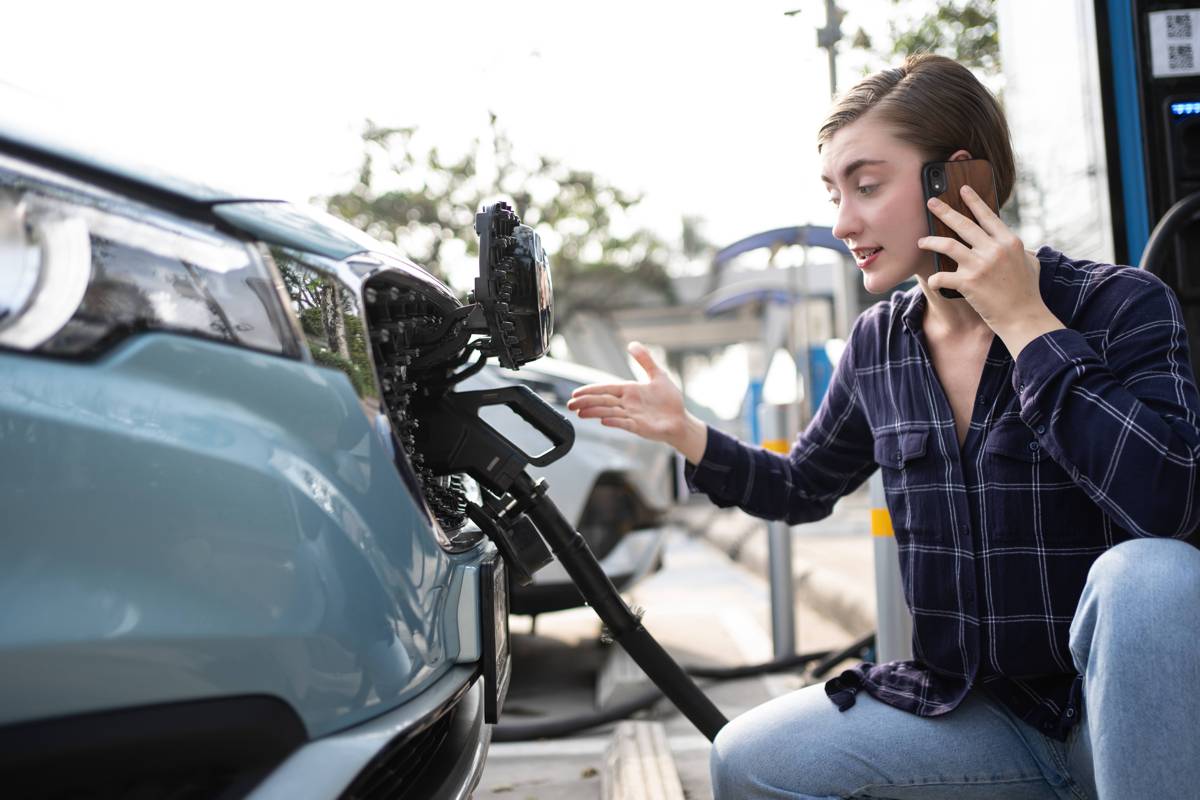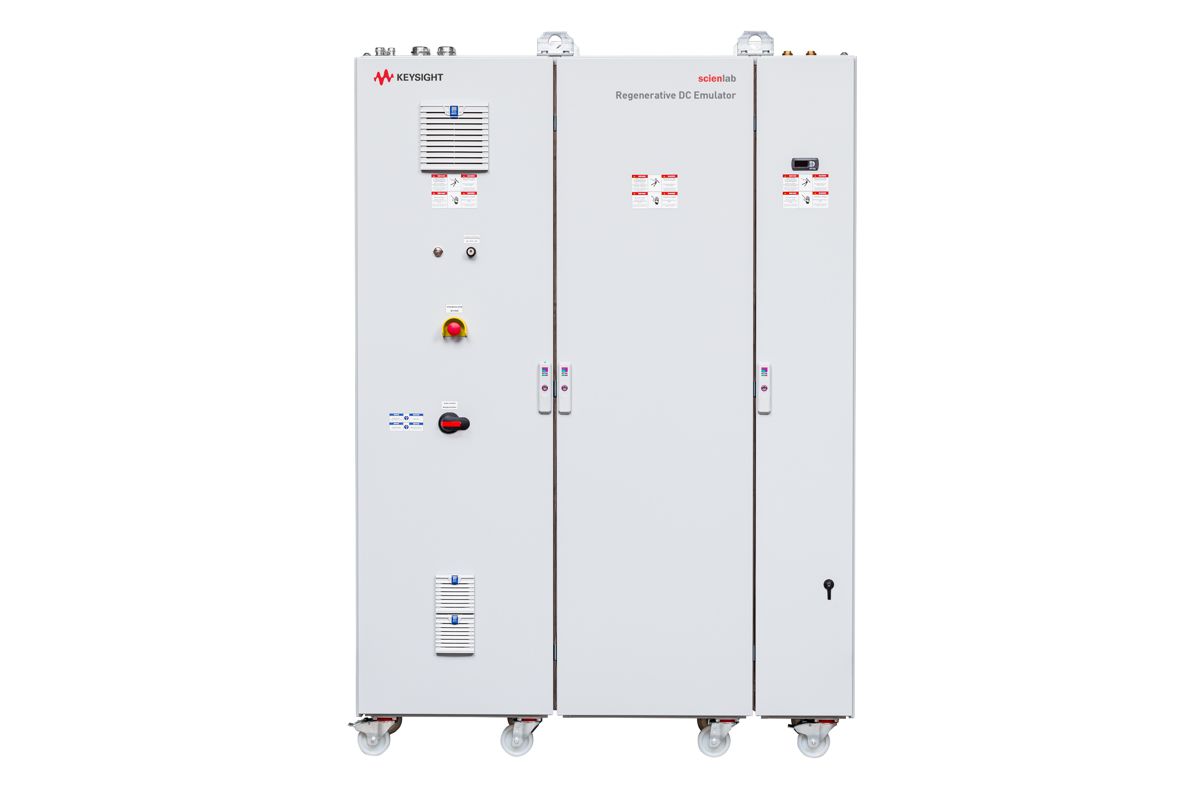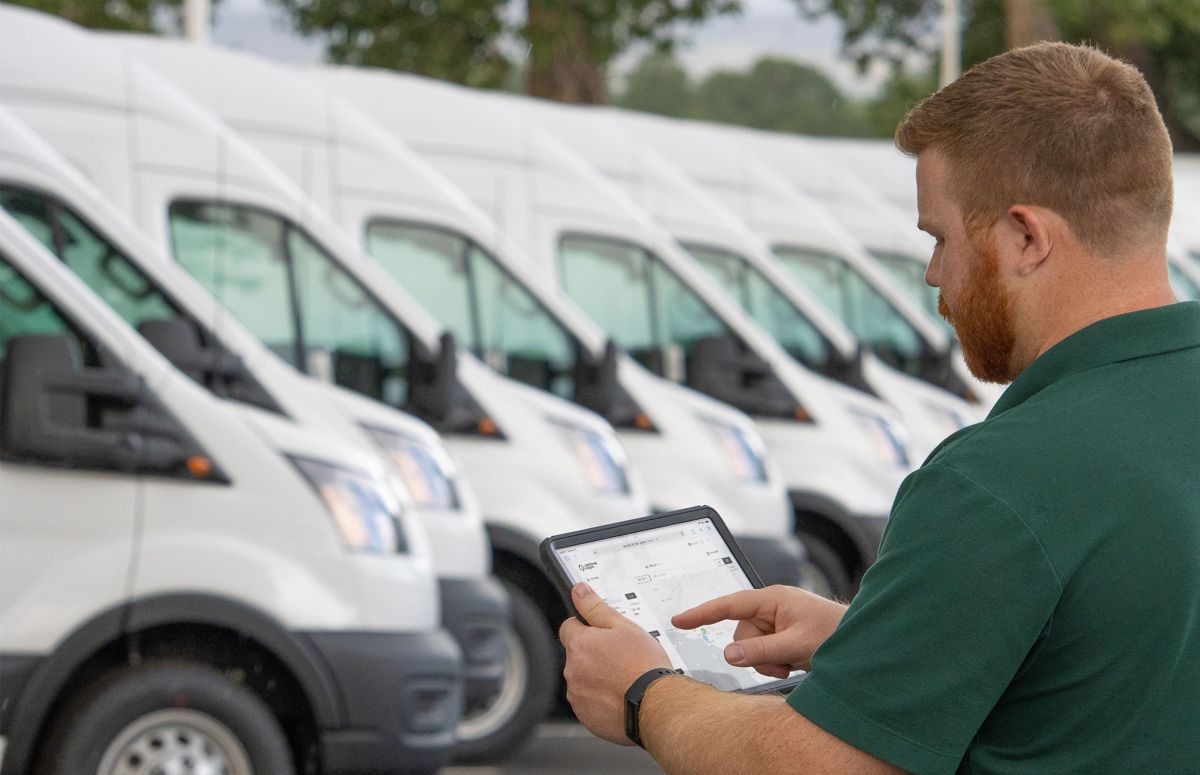Are Electric Vehicle Charging Points reliable?
With the installation of new charge points not keeping pace with the number of EVs on the road, improving the reliability of the existing charging network is even more critical.
David Cornish, head of product at Techniche, examines how better charge point analytics can help operators improve uptime.
The EV charging industry today remains fixated on infrastructure planning, procurement and installation, rather than on how best to improve the reliability and uptime of existing charge points. EV chargers themselves have benefitted from a significant amount of R&D investment and this continues as new, faster charging models come to market. But the technology that keeps the EV chargers up-and-running – the operating, monitoring and maintenance systems – are often lacking, if there at all, and are usually unconnected.
Recent anecdotal investigations into the reliability of UK EV chargers quote figures which vary from 5% of charge points being out of use to 10% being out of action on a single day. This is a long way from the UK government’s proposals published in 2022, stating that faults should be repaired quickly to ensure a minimum 99% reliability, on average. While in the U.S, a recent J.D. Power study found that the reliability of the EV charging network is getting worse with at least 1 in 5 charging attempts failing last year.
This level of unreliability gives many drivers charger anxiety and as the looming cut off point for sales of new petrol and diesel cars looms closer, there’s a risk that unpredictable infrastructure will have an impact on the expected boom in drivers moving to EVs. Today, the question many drivers are asking is ‘it going to work?’ when they pull up to a charge point, instead of ‘how far can I drive before needing a charge?’

What can go wrong?
No-one really knows how reliable EV charge points are in the long run simply because they’ve not been around long enough. Broken screens, faulty card payment systems, software failures, damaged connectors and electrical connection issues can all bring a charge point down. While older units are more likely to malfunction than newer locations because of weather exposure and general wear and tear, poor-quality maintenance regimes can impact chargers of any age.
Due to the complexity of the EV charging ecosystem, there’s a lot that can go wrong – any number of different stakeholders could be responsible for resolving an issue. Visibility of charge point uptime across all parties is difficult too as there is no standard way of calculating it – the technology involved, from hardware to software makes it complicated.
Those who could be responsible for keeping charge points operational include manufacturers, charge point owners and operators and specialist servicing companies. Currently, these stakeholders have different levels of visibility of the different maintenance requirements across this ecosystem. This disjointed situation hampers the speed at which chargers are repaired.
Outdated processes
While some charger problems can be fixed with a remote reset, many issues need an engineer on site. Companies are busy addressing the resourcing needed to service and repair their charging infrastructure, which often requires specialist knowledge.
Many operators and retailers are still logging breakdowns in a manual, error-prone process, using spreadsheets or a basic ticketing platform not designed for modern asset maintenance management. What follows is a series of emails or calls to triage the ticket between multiple parties, such as the charge point operator, helpdesk, contractor, manufacturer, local authority or energy provider. And while this may work for a small number of chargers, manual handling of maintenance tickets becomes unsustainable very rapidly as charging networks grow.
The right digital systems are needed to make maintenance an efficient and cost-effective operation. Automated workflows can transform how quickly charge points are repaired, while analytics deliver valuable insight into how reliable a charging network really is.

How analytics can help
Automation removes the manual triaging and processing of maintenance work orders, while seamlessly connecting disparate systems. Requests are logged and the relevant teams are alerted automatically that action is needed. A smart solution will automatically dispatch work orders, understand the error code and know which team should be notified to fix an asset. This whole process takes seconds, not days or hours.
The data generated by this digital approach and the accompanying analytics can answer multiple business-critical questions. How many chargers are currently unavailable? What’s the charger uptime by manufacturer? Are maintenance teams meeting performance SLAs? How many work orders have been raised per charger model?
Knowing the average time between failures of different equipment models means suppliers can be held accountable and benchmarked. Reliability across different vendors, sites, geographies and climates can be compared to understand which equipment performs the best in different environments.
Ultimately, monitoring reliability trends means reduced downtime and a superior customer experience, while longer-term, understanding asset performance leads to smarter EV charger investments, better budget forecasting and planning. Accurate data collection and analysis not only provides valuable insight into which assets fail and how often, but as more data points are gathered, the intelligence becomes valuable for the wider industry, revealing patterns and hotspots, enabling a better response to correct them.
The EV charging industry is still young and grappling with how best to deliver a reliable charging experience to the public. EV charge point maintenance remains an afterthought for many, but charger anxiety won’t go away while this remains the case.












